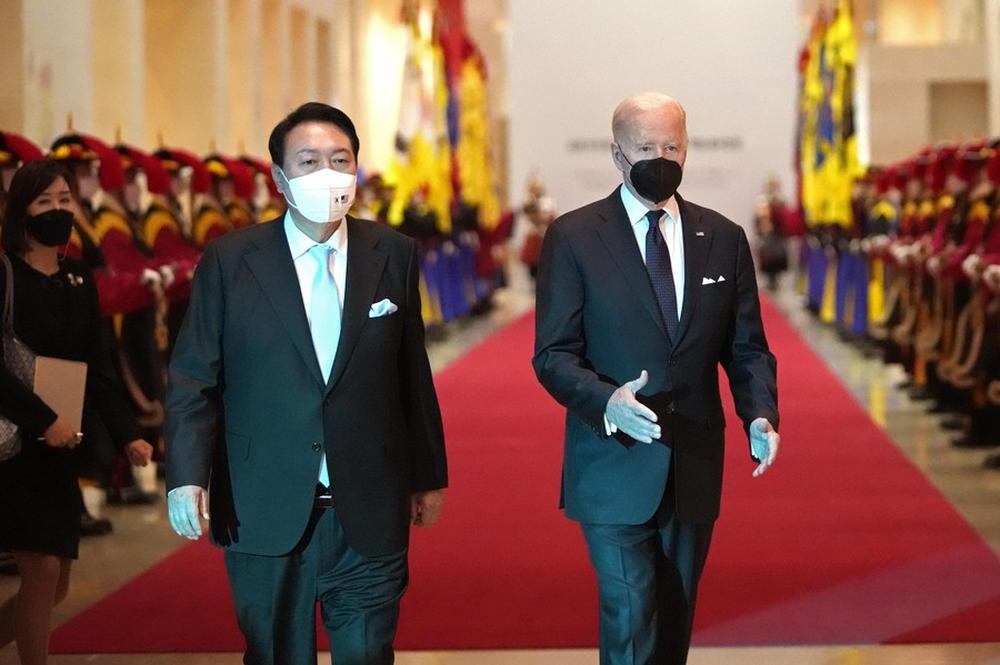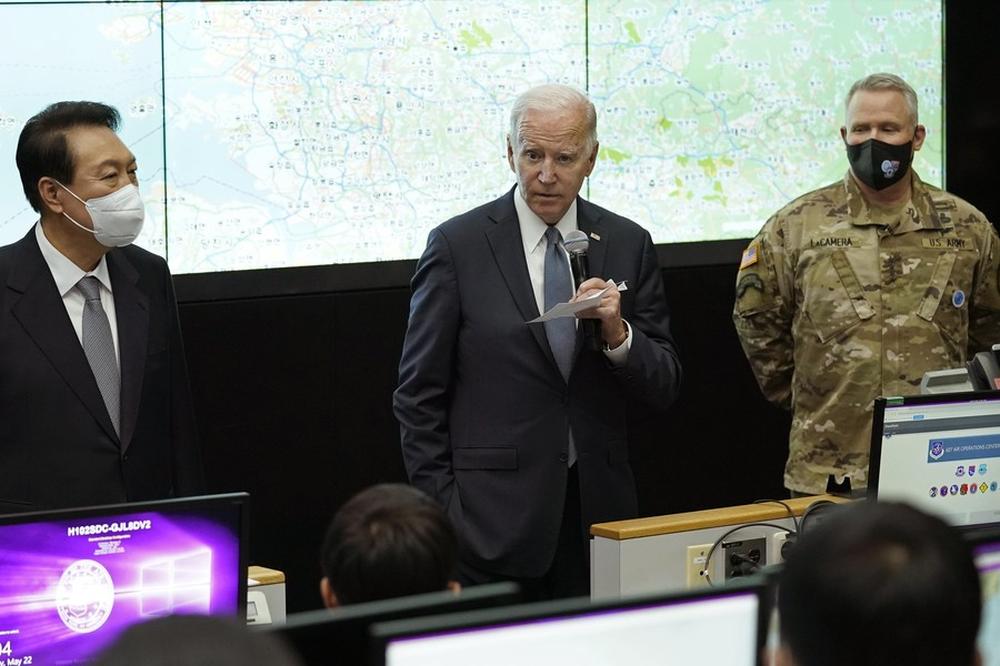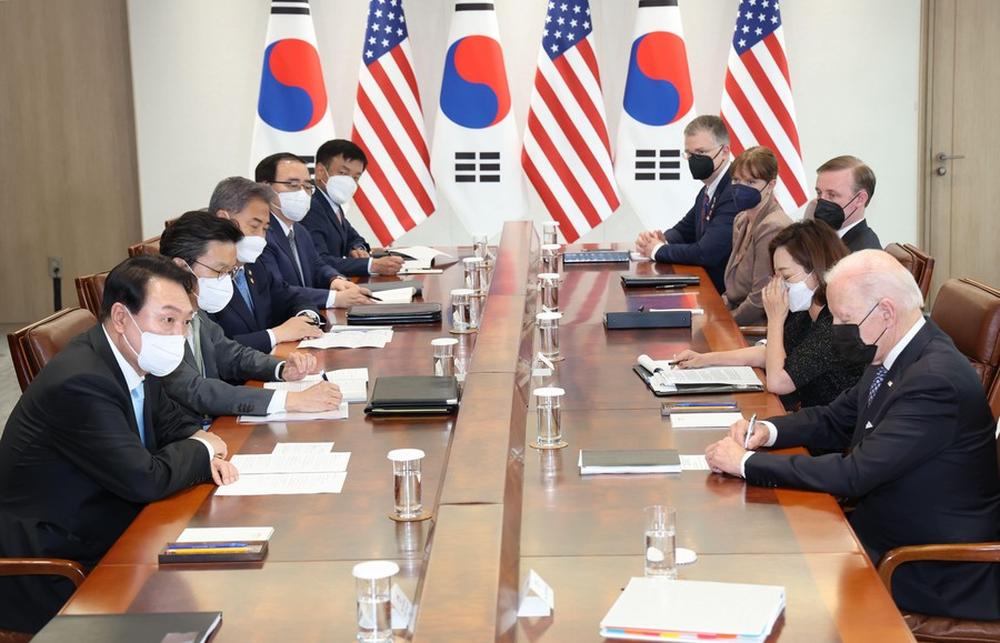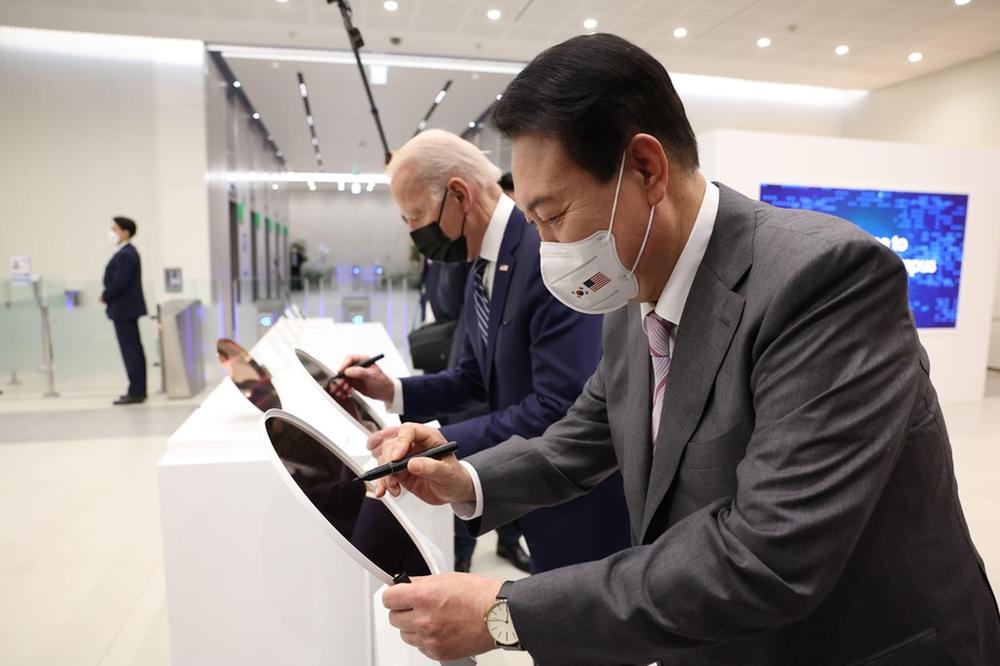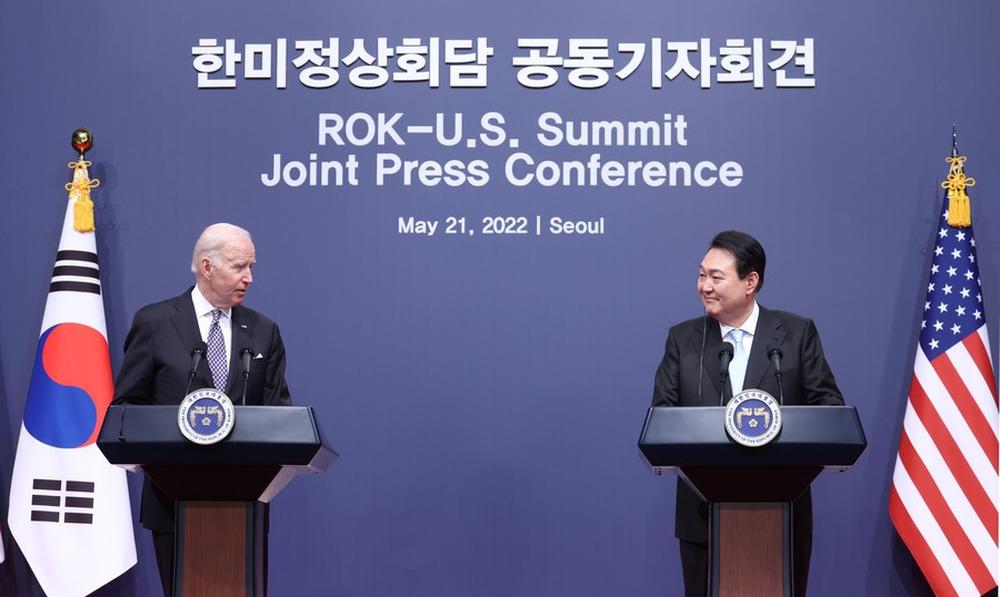- #North Korea
- #Nuclear & Missile Issues
- #Security & Defense
- #US-ROK Alliance

► In the future, the Yoon Suk Yeol administration should further strengthen solidarity with countries that share the values of liberal democracy and human rights, so that an overarching consensus on upgraded deterrence and a detailed integrated defense strategy can be prepared.
► The administration will have to put their best efforts into raising the ROK’s response posture, while securing deterrence that can substantially defend against North Korea's nuclear and missile threats.
On May 21, 2022, the 20th President of the Republic of Korea Yoon Suk Yeol held a summit meeting with U.S. President Joe Biden eleven days after President Yoon’s inauguration. At the summit, which was held earlier in the president’s term than any previous South Korean administrations, the leaders reaffirmed their willingness to work together to respond to North Korea's nuclear and ballistic missile threats and discussed peaceful and diplomatic solutions to the North Korean issue. It was a great achievement for the newly inaugurated Yoon Suk Yeol administration to secure the U.S. defense commitment to South Korea and the provision of extended deterrence, as this has become an urgent task for the new president given North Korea’s increasing nuclear attack capabilities and China's rapidly expanding nuclear power projections.
[ROK-U.S. Joint Statement and the leaders’ North Korea policy]
During this visit to ROK, President Biden reaffirmed his tough policy toward North Korea. In response to a reporter’s question about what he would say to North Korean leader Kim Jong-un, President Biden replied, “Hello... period,” which calls to mind the era of ‘strategic patience’ and illustrates the ambiguous attitude of the U.S. vis-à-vis North Korea, which has approached neglect in recent years. President Biden has been seeking dialogue with Chairman Kim Jong-un but has repeatedly stated that he will meet the North Korean leader only after Pyongyang expresses its intention to denuclearize and formulates a roadmap for negotiations.
The direction of North Korea policy revealed by the leaders of ROK and the U.S. at this meeting solidifies the combined defense posture and extended deterrence of the ROK-U.S. alliance while leaving the door open to unconditional dialogue and humanitarian aid towards North Korea. North Korea has demanded that the complete denuclearization of the Korean Peninsula and the principled response to North Korea's provocations agreed to by Presidents Yoon and Biden be withdrawn, saying that it is a policy of hostility toward North Korea and an application of double standards - an “action-for-action” response method that takes into account the evolving threat of North Korea. This contrasts with the agreement from one year ago, which stated that former President Moon Jae-in and President Biden would uphold the Panmunjom Declaration and the 2018 Singapore Joint Statement.
▲ Confirming U.S. commitment to substantial extended deterrence
The ROK-U.S. Joint Statement expresses that President Biden “affirms the U.S. extended deterrence commitment to the ROK using the full range of U.S. defense capabilities, including nuclear, conventional, and missile defense capabilities.” This is the first time in a summit statement that “nuclear” is used as a defensive measure to prevent a nuclear attack by North Korea. With North Korea recently completing preparations for its seventh nuclear test and having mentioned the possibility of preemptive use of tactical nuclear weapons, the two leaders’ declaring a policy of “responding to nuclear weapons with nuclear weapons,” the highest level of nuclear deterrence, can be interpreted as sending a strong warning message to North Korea.
In addition, the two leaders agreed to restart the high-level Extended Deterrence Strategy and Consultation Group (EDSCG), which was largely ineffective under the Moon Jae-in administration. If the EDSCG (which has been suspended since January 2018) is resumed, it could become a strategic framework to offset North Korea's nuclear weapons. This will enhance the execution power of extended deterrence, in that it can cover the deployment of U.S. strategic assets in a timely manner, should a crisis on the Korean Peninsula escalate. The new version of 'Operations Plan 5015', [BF1] which is currently being revised, needs to be further refined to reflect these points.
▲ Strengthening the ROK-U.S. combined defense posture
The ROK and U.S. leaders also discussed the deployment of U.S. strategic assets and the necessity of joint training to counter the North Korean nuclear and intercontinental ballistic missile (ICBM) threat. Since 2018, there has been no progress on the North Korean nuclear issue, even though the three major ROK-U.S. joint exercises (Key Resolve, Foal Eagle, and Ulchi-Freedom Guardian) have been suspended since 2018. The ROK-U.S. joint exercises should never be used as a tool for negotiations on the North Korean nuclear program or as an object of bargaining. The ROK-U.S. joint statement expressed that “both leaders agree to initiate discussions to expand the scope and scale of combined military exercises and training on and around the Korean Peninsula.” This is expected to enlarge the ROK-U.S. combined exercises, which have been reduced in recent years, and revive the training for overseas participation. But this is more than just simple training, and the cooperation between military leaders and diplomats will certainly strengthen the alliance between the two countries while improving the readiness of the combined forces and moderating North Korea's provocations.
[The meaning of North Korean provocations]
North Korean leader Kim Jong-un, who has launched ballistic missiles 23 times this year alone, conducted another missile provocation right after President Biden's visit to Korea and Japan on May 20-24. Recently, North Korea's nuclear capability has reached the point where it is possible for them to conduct advanced, multiple, and simultaneous launch tactics. This most recent provocation is the latest in a succession of launches that include a new ICBM Hwasong-17 missile with an estimated maximum range that can hit the US mainland and two short-range ballistic missiles (SRBMs) with a range that includes US bases in South Korea and Japan. ICBM and SRBM launches have become the primary brinkmanship tactic that North Korea has been repeating over the past 20 or 30 years in the process of nuclear negotiations.
In particular, the strategic implication is significant in that the provocation occurred while President Biden was on his way home from the ROK-US and US-Japan summits . It is a high-intensity, armed provocation in protest against the South Korean and US leaders' agreement to specify nuclear weapons as a countermeasure against the threat of a North Korean nuclear attack, expand joint exercises, and deploy U.S. military strategic assets in a timely manner. This provocation has confirmed how practical the North Korea policies agreed upon at the ROK-U.S. summit are, specifically, the joint response of the ROK and U.S. military authorities, reinforcement of joint training, and the presentation of a specific roadmap for strategic asset deployment.
Meanwhile, North Korea has so far not made any reports about the ballistic missile launched on May 25. Normally, North Korea's provocations are characterized as missile launches by the country’s major propaganda media outlets, but this time it has been exceptionally silent. Various analyses and explanations of this situation are possible, such as that it a “strategy for daily military self-defense actions”, “internal and external variables due to the spread of COVID-19 and the launch of the Yoon Suk Yeol government”, and that North Korea is “strengthening strategic ambiguity with an emphasis on technological advancement”.
[Tasks of the Yoon Suk Yeol government]
As the new, global Cold War confrontation intensifies, North Korea, which has become a de facto nuclear power, is likely to become even more daring than in the 2017 ‘fire and fury’ era. However, the strengthening solidarity between North Korea, China, and Russia paralyzes UN sanctions against North Korea, and there are no official means to prevent North Korea's runaway development of its nuclear force. In the foreign policy agenda of the Biden administration, the North Korean issue is a low priority compared to the conflict in Ukraine and the U.S.-China rivalry. Of course, the main responsibility lies with North Korea, but South Korea and the U.S. need to be more proactive in resolving the currently deadlocked North Korean problem. If former President Moon Jae-in's ROK-U.S. summit last year revealed the overall direction of dealing with North Korea, it can be said that President Yoon's summit included practical rules of conduct. Therefore it is more important to see how far the Yoon Suk Yeol administration can cooperate with the U.S. to advance the North Korean issue in the Biden administration's foreign policy agenda.
As the devil is in the details, it is important to see if and how the Yoon administration will take the lead on the joint statement’s many issues in a sophisticated and multifaceted way. For example, although the joint statement argued for “complete denuclearization of the Korean Peninsula,” prior to the final text, President Yoon used the phrase “complete denuclearization of North Korea” and President Biden used “complete denuclearization of the Korean Peninsula,” in addition to other subtle discrepancies. In the future, the Yoon Suk Yeol administration should further strengthen solidarity with countries that share the values of liberal democracy and human rights, so that an overarching consensus on upgraded deterrence and a detailed integrated defense strategy can be prepared. The administration will have to put their best efforts into raising the ROK’s response posture, while securing deterrence that can substantially defend against North Korea's nuclear and missile threats.

